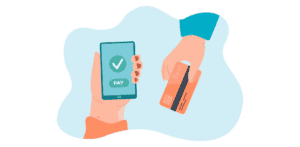
Credit card transactions appear to be instantaneous. A swiping, tapping or clicking of “Pay Now” and a confirmation screen appears, and the customer leaves. But behind that easy moment is a tangled web of events. It’s crucial to understand this chain, particularly if you’re a small business owner, a member of a finance team or a developer working to integrate payment systems.
A myth that you might believe in is that as soon as a card is swiped, the money goes straight into the business’s account. In fact, various processes and financial gateways collaborate to authenticate, authorize and settle every transaction. There are multiple steps involved from encryption of data to fund transfer, and this may take several days to fully process.
In this guide, we’re going to understand the full life cycle of a credit card transaction. We’ll understand all the different parties involved, what part they play, and where your business fits into the flow. Knowing the ins and outs of the payment processing tool — whether you’re accepting payments in-person or online — can help you recognize delays, bypass unnecessary fees and ensure your card transactions are secure.
The Key Players in Credit Card Payment Processing
The Cardholder
This is the people using a credit or debit card to buy something and do with the payment processing. The process begins when the customer makes a purchase by entering card information online, or by tapping/swiping at the point of sale. Their job’s done once they’ve authenticated the transaction (i.e., entered their PIN or completed the Secure test).
The Merchant
The merchant is the party who accepts such credit card payments. To accomplish this, a vendor needs a merchant account that handles credit card purchases for vendor. Whether in retail, hospitality, or e-commerce, merchants rely on secure systems to initiate and complete card payments. This is an important component of payment processing.
The Payment Gateway
The payment gateway is the digital interface between the customer and the processor. It reads the cardholder’s data and sends it via the payment processor through an encrypted track. In online exchanges, it can be critical for fraud prevention or for secure data transfer, especially at checkout.

The Payment Processor
The payment processor is the technology provider that makes sure the transaction goes to the right credit card network and banks. It verifies the validity of the transaction, communicates to banks and confirms that money has been successfully transferred. In a sense, it is the transaction’s traffic controller.
The Payment Network (Visa, Mastercard, etc.)
These are the tracks that the transaction rides on. Networks such as Visa and Mastercard connect the issuing bank that gave the cardholder the card to an acquiring bank that lives on the merchant’s side. They also set interchange fees and transaction rules that all the parties must follow.
The Issuing Bank
This is the bank that provides the card to the customer. When request for a transaction is made, a response is sent by the issuing bank that verifies if the card has been issued, validates the credit amount or balance, and returns approved or declined status. It then reports that decision back up the chain.
Acquiring Bank (Merchant Bank)
The acquiring bank houses the merchant account and retains the money from the sale when it is authorized. It transfers the ultimate payment to the merchant’s account — often minus processing fees — and helps the processor reconcile payments and handle chargebacks.
Step-by-Step Breakdown of a Credit Card Transaction
Though the transaction itself seems instant, the payment using a credit card is a multi-step process that happens in just a few seconds. Here’s what actually happens:
Step 1: Payment Initiated by the Cardholder
It starts from a cardholder initiating payment at a POS machine or an online checkout process. They swipe it, they tap it, or they enter card details manually. It is this step that creates the payment data to trigger the process.
Step 2: Data is sent to Payment Gateway
Next, the payment gateway comes into play. It records the payment details and securely encodes them. The gateway also validates the formatting and finds anomalies in the data before submitting it to the payment processor. This is a must for securing online transactions.
Step 3: Processor Forwards Data to Card Network
The data is then sent through the payment processor to the appropriate credit card network — including Visa, Mastercard or American Express. The processor then plays the role of an intermediary, bundling and forwarding the transaction on behalf of approval.
Step 4: Card Network Directs Request to Issuing Bank
The details of the transaction are now forwarded by the credit card network to the issuing bank, which is the bank that issued the card to the customer. The issuing bank validates that the card number is valid, that the card has enough available balance or credit, and that the transaction is not likely to be fraudulent.
Step 5: Issuing Bank Authorizes or Declines from the Issuing Bank.
On the basis of this review, the issuing bank approves or declines the charge. The network sends that decision back through the card network to the processor. This all occurs in seconds.
Step 6: Processor Sends Approval to Gateway → Merchant
When the processor gets a response, it reports the results back to the payment gateway, which then passes it on to the merchant. If approved, the payment is made, the sale is completed and the merchant provides the product or service to the customer.
Step 7: Transaction Settlement (End of Day)
Once business hours have ended, the merchant can initiate the settlement process. They sent an approved batch of transactions to your processor, then the processor sends them on to the card networks and issuing banks. This step formally requests the transfer of funds.
Step 8: Merchant Receives Funds
Then the merchant gets paid to their merchant account usually within 1-3 business days. The acquiring bank will then deposit the money after interchange fees and processor fees have been deducted.

What Are Interchange Fees?
Interchange fees are fees the merchant’s bank, known as the acquiring bank, pays to the customer’s bank, the issuing bank, whenever a credit or debit card transaction happens. These fees cover the costs the issuing bank incurs, such as fraud protection, credit risk and processing the transaction.
Who Sets Them?
Interchange rates are determined by the credit card networks — Visa, Mastercard and Discover. The amount of the fee is determined by a few factors, including: card type you accept (debit, credit, etc.), how you process the transaction (online, in-person, hand-keyed, etc.), and the type of business you have.
How They Affect Merchants?
The largest share of credit card processing fees, interchange fees are frequently misunderstood and will vary from provider to provider. The fee on each transaction is 1.5% to 3.5%. They, thus, have a bearing on a merchant’s pricing model and can eat into profits. Understanding and controlling interchange costs is essential for every business that wants to keep its company costs low.
Authorization vs. Settlement
Authorization
Authorization is the real-time portion the transaction. If a cardholder tries to make a purchase, the issuer bank checks to see if there are sufficient funds in the account for that transaction and either approves or denies the charge. This step places the amount of the transaction aside in the customer’s account — not that it actually moves the money.
Settlement
Settlement happens later — typically in a daily batch. At settlement, the merchant forwards all authorized transactions to the processor, which then forwards them on the issuing bank to actualize the transactions from the issuing bank to the acquiring bank. This is when the money at last lands in the merchant’s account.
Types of Credit Card Transactions
Credit card transactions vary based on how the card is used. Each type comes with different risks and costs for the merchant.

Card-Present (CP)
These transactions happen in person when a card is swiped, inserted, or tapped at a terminal. Because the cardholder is physically present, CP transactions carry lower fraud risk and typically lower processing fees.
Card-Not-Present (CNP)
CNP transactions occur online, by phone, or via mobile apps, where the card isn’t physically used. These come with higher fraud risk and higher fees, making secure gateways and fraud tools essential.
Recurring Billing
Used for subscriptions, memberships, or automated services, recurring billing stores payment info securely. It often relies on tokenization and requires the customer’s prior billing authorization to ensure compliance and reduce disputes.
Common Pricing Models in Payment Processing
Understanding how processors charge you is key to controlling costs. Here are three common pricing models:
Interchange Plus
This model charges the actual interchange fee plus a transparent markup. It’s ideal for high-volume businesses that want to track processing costs in detail.
Flat Rate
You’re charged a fixed percentage per transaction, regardless of card type or network. It’s easy to understand and suits small businesses that prefer simplicity over precision.
Tiered Pricing
Transactions are grouped into qualified, mid-qualified, and non-qualified tiers with different rates. While common, it’s the least transparent and often results in higher costs without merchants realizing it.
Security and Compliance in Payment Processing
Securing payment data isn’t optional—it’s essential for protecting your business and customers.
PCI DSS Compliance
The Payment Card Industry Data Security Standard is mandatory for businesses handling cardholder data. It includes technical and operational requirements. Compliance levels vary based on transaction volume and help avoid fines and data breaches.
Tokenization and Encryption
Tokenization replaces card data with random strings (tokens), while encryption scrambles sensitive information during transmission. Both are crucial for card-not-present transactions and minimizing breach risks.
EMV Chip Technology
EMV (Europay, Mastercard, Visa) chips have become standard in card-present environments. These smart chips offer added layers of fraud protection and are legally required in many countries.
Key Challenges in Payment Processing
Even with advanced systems, merchants still face hurdles.
Fraud and Chargebacks
Fraud is most common in online transactions. Chargebacks—when customers dispute charges—can cost merchants time and money, often resulting in lost revenue and penalties.
Downtime or Payment Failures
Network outages, gateway failures, or processor issues can lead to transaction failures, hurting customer trust and daily sales.
Hidden Fees and Contract Terms
Processors sometimes include complex pricing in their contracts. Merchants may overlook termination fees, monthly minimums, or non-transparent rates. Reading agreements carefully is vital.
Tips for Merchants to Optimize Payment Processing
You can take several proactive steps to streamline your payment operations.

Choose the Right Provider
Select a processor with clear pricing, responsive support, and a history of reliability. Avoid providers that hide fees or require long-term commitments without flexibility.
Review Statements Regularly
Monthly processing statements may hide unexpected fees or rate increases. Reviewing them helps catch issues early.
Use Secure and Modern Systems
Upgrade your POS terminals, payment gateways, and software regularly to protect against evolving threats and reduce downtime.
Train Staff on Transaction Protocols
Ensure employees know how to handle card acceptance, refunds, and suspicious activity. This reduces mistakes and speeds up checkouts.
Conclusion
Credit card processing might seem simple, but it’s powered by multiple steps and players. From authorization to settlement, each phase affects cash flow, security, and costs. By understanding the system and choosing the right provider, merchants can lower fees, reduce risks, and deliver a seamless payment experience to customers.
FAQs
Q1: How long does it take to receive funds after a credit card sale?
Most businesses receive funds within 1–3 business days, depending on the processor and bank policies.
Q2: Are credit card fees negotiable?
Yes, especially for businesses with high sales volume or those willing to commit to long-term contracts.
Q3: What’s the difference between a processor and a gateway?
A gateway collects and encrypts payment info, while the processor routes the transaction through banks and card networks.
Q4: Why was a card declined if the customer had funds?
Common reasons include fraud alerts, expired cards, credit limits, or technical errors during the transaction.
Q5: Can a business accept credit cards without a merchant account?
Yes, using third-party providers like PayPal, Stripe, or Square—but they come with higher fees and less control.